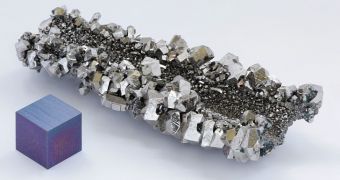Airplanes and space shuttles need be made of certain materials that other vehicles don't use, because not every material can survive rapid ascensions through the atmosphere, or retain their shape and integrity in the cold the vacuum of space.
C-103 is one of the more often used materials in aircraft. It is a Niobium based alloy that is very, very resistant to heat, as well as lightweight and fairly affordable, all things considered. It was used in the Apollo command module even, years ago.
It can also cope with cryogenic temperatures and insane vibrations, which are always a factor during rapid flight. The air always buffets against the exterior of an airplane or shuttle after all.
Apparently, NASA and SpaceX have figured out how to 3D print the material, opening new design options for flying machinery.
If you want more info about the material, C-103 has a melting point of 4,260 ± 90ºF, which is around 2,350 ºC.
A 3D Systems ProX selective laser sintering 3D printer was used to pull off the additive manufacturing technique. One can only imagine what shapes can now be created, what kinds of components can be used now in super-heated thrusters, and rocket engines. MTI has its work cut out for it.

 14 DAY TRIAL //
14 DAY TRIAL //